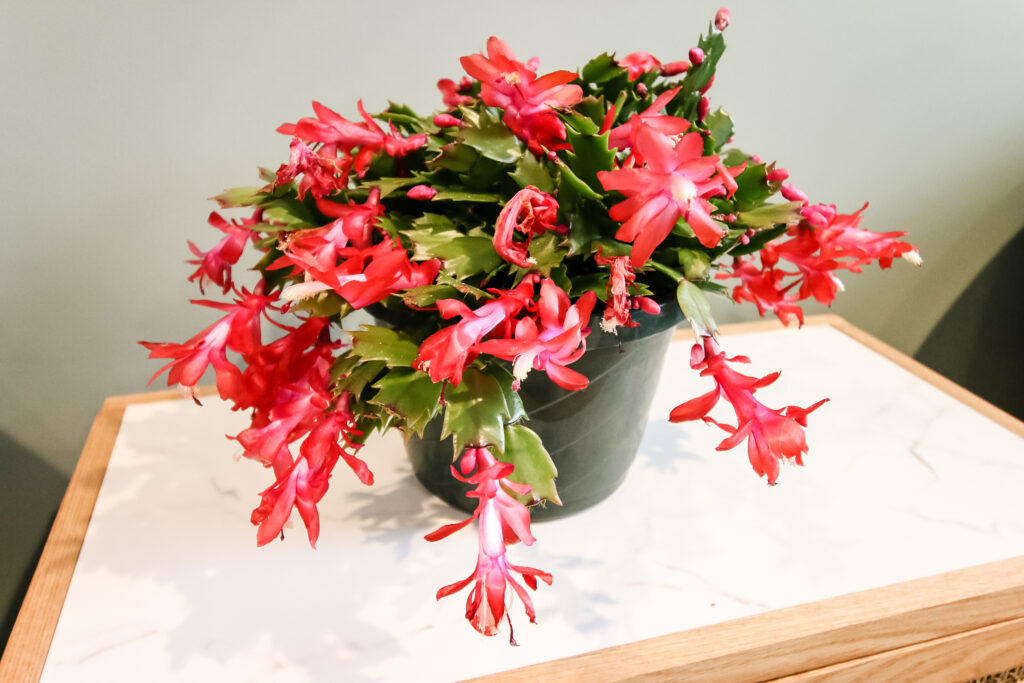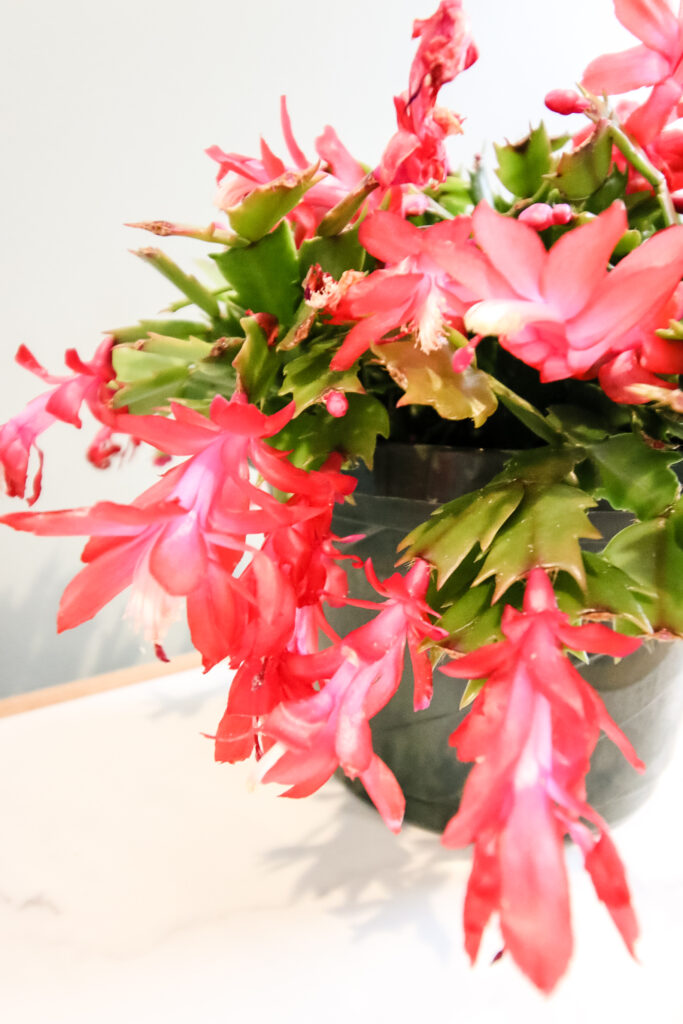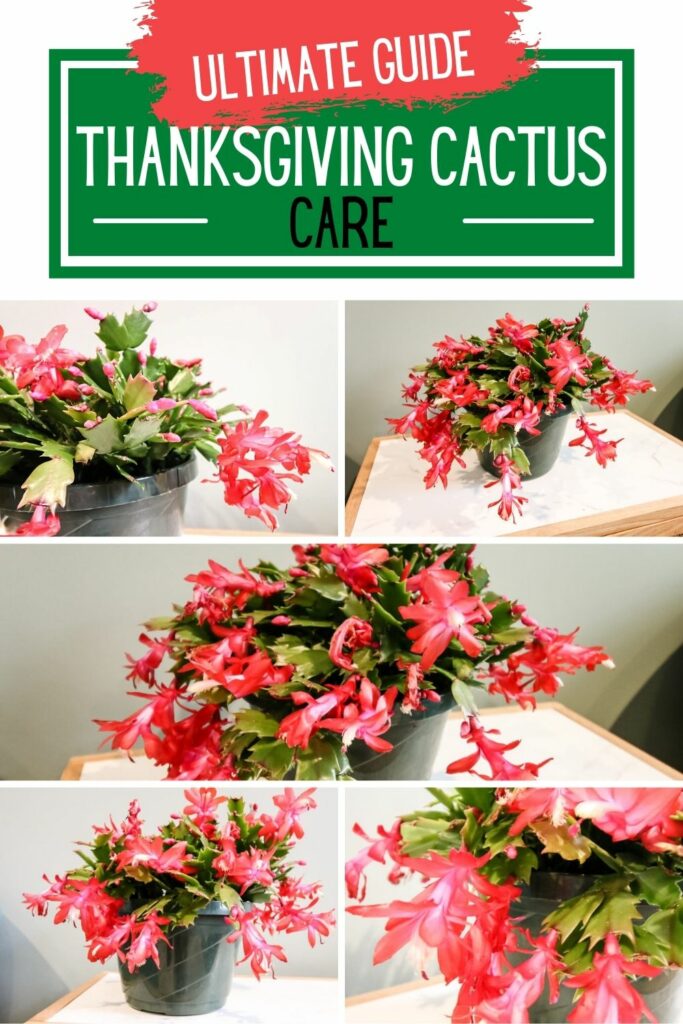Curious about how to care for your Thanksgiving cactus outdoors? Let's explore whether it's possible to keep your Thanksgiving cactus in an outdoor setting and the important considerations to ensure its well-being!
Unlike the classic image of tall, spiky desert cacti, the Thanksgiving cactus, also known as Schlumbergera truncata, presents a different profile.
This unique cactus hails from Brazil's southeastern regions, where it naturally thrives in the cozy nooks and crannies of other plants or trees.
Before we delve into the specifics of keeping your Thanksgiving cactus outdoors, it's worth noting the various names you might come across for this epiphytic plant.
Belonging to the Schlumbergera genus, it's often referred to by multiple nicknames:
- Thanksgiving cactus
- Christmas cactus
- Easter cactus
- Crab cactus
- Holiday cactus
Characterized by flat stems with serrated edges, these cacti have a rich, dark green hue.
What truly captivates enthusiasts are the stunning flowers that grow on the tips of their stems, displaying a range of colors, including vibrant shades of red, pink, white, and more.
The timing of their blooming sets them apart; Christmas, Easter, and Thanksgiving cacti each bloom during their respective holiday seasons, with subtle variations in leaf shapes as well.
As a new plant parent, you might find yourself pondering the question of outdoor care, including whether your Thanksgiving cactus can thrive outside.
To ensure the health and prosperity of your plant, there are specific requirements to consider.

Can you keep a Thanksgiving cactus outside?
While it is indeed possible to keep your Thanksgiving cactus outdoors, there are several key factors to bear in mind and preparations to make.
Let's explore its essential care needs in an outdoor setting.

Climate Conditions
Understanding a plant's natural habitat is crucial for its care. The Thanksgiving cactus originally hails from tropical forests with high humidity levels, thriving in the sheltered shade beneath other trees and rocks. It prefers a temperate climate and is averse to sudden temperature fluctuations.
These cacti flourish in mild conditions, ideally within the range of 70°F to 80°F (21°C to 26°C). Nighttime temperatures dropping to around 55°F (12°C) are particularly conducive to the formation of flower buds.
The autumn climate aligns well with their preferences.
In summer, monitor their light exposure closely, shielding them from direct sunlight.
As for bringing your Thanksgiving cactus indoors, it's advisable to do so during the winter, when temperatures significantly drop below their preferred range.
Light Exposure
When contemplating outdoor care for your Thanksgiving cactus, it's crucial to provide the right lighting conditions. In its natural habitat, it thrives in shaded areas with indirect light.
Every plant comes with its unique set of requirements, and light exposure is a fundamental aspect of plant care. While these cacti are often cultivated indoors, they can also be successfully maintained outdoors.
Indoors, they prefer bright, indirect light, so avoid placing them in direct sunlight, especially under south-facing windows, as the intensity can be overwhelming.
When outdoors, they can tolerate some morning and evening direct sunlight, but this should be limited.
Direct sunlight, especially during the hot afternoon hours of summer, can scorch their leaves, causing damage. Therefore, moderation in outdoor light exposure is crucial.

Watering
Like many other cacti, your Thanksgiving cactus requires careful attention to watering. These plants thrive in a humid environment, and replicating these conditions is essential to keeping them happy.
The most important rule is to avoid overwatering. Excess moisture can attract pests, diseases, and lead to root rot, especially if your plant is outdoors and exposed to rainfall.
To address this, ensure your plant is potted in well-draining soil and a container with ample drainage holes to allow excess water to escape.
Additionally, choose a soil mix with a coarse texture, and consider adding materials like granite chips or pumice for enhanced drainage.
However, avoid allowing the soil to become excessively dry, as this can lead to root desiccation. Instead, water your Thanksgiving cactus when the top layer of soil feels slightly dry to the touch.
Blooming Season
Whether you're keeping your Thanksgiving cactus outside or indoors, it will reward you with beautiful flowers at the ends of its stems. Proper care is essential to ensure that you get tons of flowers.
In their native habitat, these cacti initiate blooming shortly after the rainy season concludes. To encourage blooming, it's crucial to maintain consistent conditions and provide the right amount of light.
When kept outdoors during spring and summer, they should be positioned in shaded areas to prevent direct sunlight and overheating.
However, as autumn and winter approach, bright light becomes crucial, along with a suitable temperature range and 13 hours of continuous darkness for a period of eight weeks.
This controlled darkness period is key to bud production. Any interruption in this dark period, even briefly, can impact blooming.
Some gardeners use covers, such as dark cloths or boxes, to regulate the darkness when keeping their Thanksgiving cactus outside.

Pruning and Maintenance
After your Thanksgiving cactus has graced you with its beautiful flowers, consider some light pruning to encourage new growth and future blooms.
Pruning is a straightforward process, involving the gentle removal of faded flowers, a practice known as "deadheading."
However, it's essential to complete pruning before late spring to avoid interfering with the plant's growth cycle.
Fertilization
To maintain soil health and support your Thanksgiving cactus, pay attention to fertilization. These plants thrive in humus-rich soil with good drainage. Keep the soil consistently moist, without becoming overly saturated or parched.
Fertilize your plant in late winter or spring, after the blooming season has concluded. Avoid fertilizing after October begins, as this is when flower bud development begins.
Return to your regular fertilizing routine after the blooms have fallen off, applying a half-strength, balanced fertilizer every two weeks during the spring and summer months.
In conclusion, keeping your Thanksgiving cactus outdoors can be a rewarding endeavor, provided you create a suitable environment and maintain consistent care.
By following these guidelines, you can enjoy the beauty of your Thanksgiving cactus outdoors!
Thanks for reading!


Hey there, I'm Morgan, a houseplant enthusiast from sunny Charleston, South Carolina. Growing up surrounded by my mom's lush orchids and African violets, I discovered the magic of bringing nature indoors. Thanks to the pandemic, I delved deeper into houseplants, discovering their power to uplift moods and transform spaces. I'm here to spill all my secrets, helping you pick the perfect houseplant - and make it happy. Let's keep your plants alive, together! 😊




